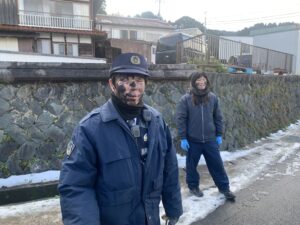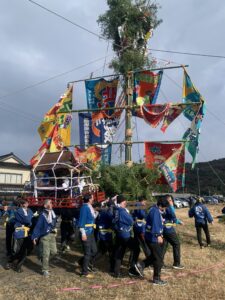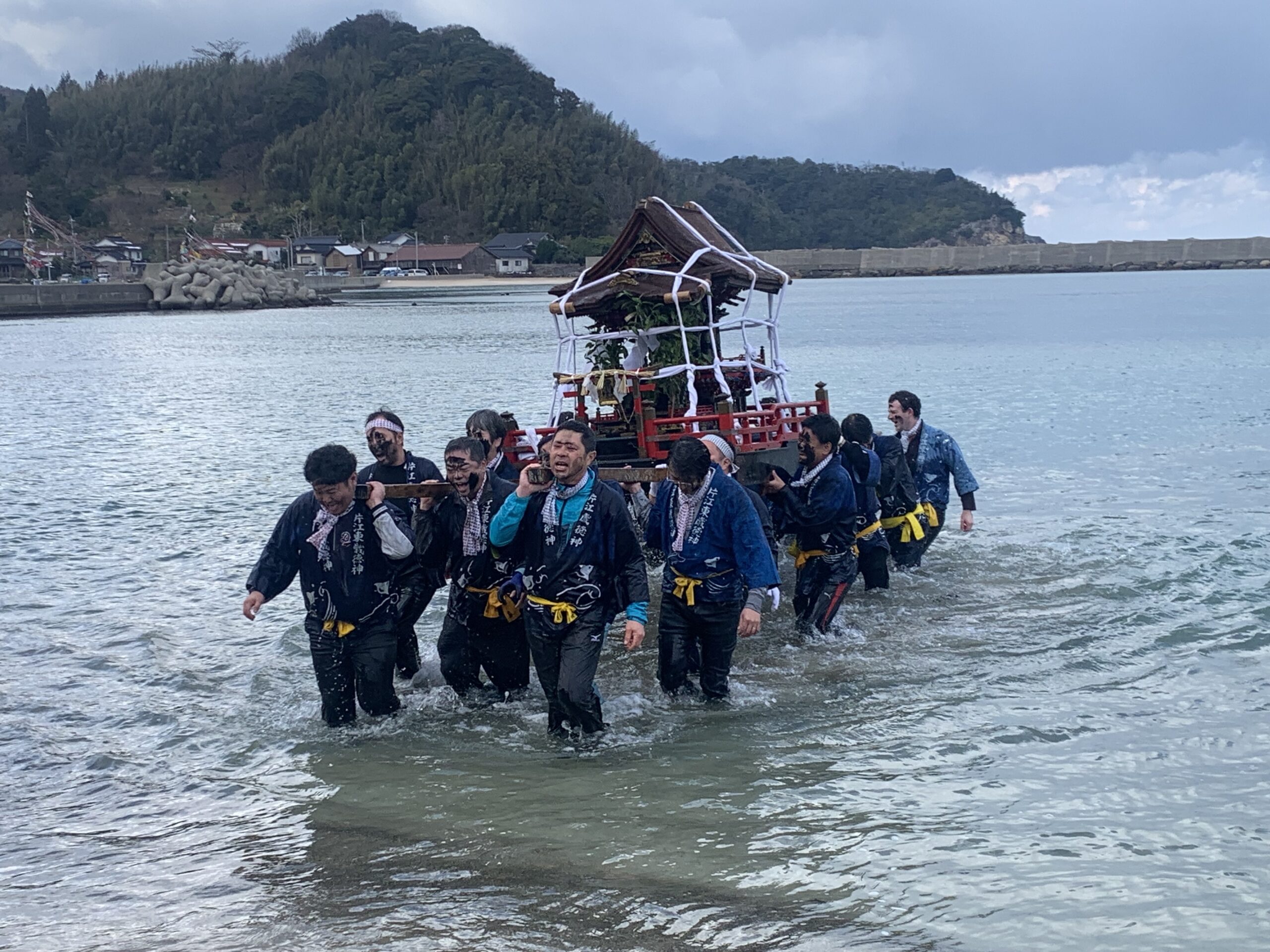Katae, Shimane Peninsula – The winter chill was forgotten as the small fishing hamlet of Katae in the Shimane Peninsula came alive with the vibrant energy of the Black Ink Festival on Sunday. Participants had their faces painted with black ink, filling the village with laughter and excitement, while camera enthusiasts from across the country, alongside media outlets, flocked to capture the unique scenes.
Katae Fishing Hamlet, cradled by the Miyano Mountains on one side and the Sea of Japan on the other, prospered through its glorious fishing flotilla known as Katae Sendan. The annual festival, held on the first Sunday after January 6th, attracts locals and visitors alike. According to the local historical record Izumo Fudoki, the Japanese god Kunioshiwake named the land Katae. The hamlet, now home to approximately 480 residents, has continued to uphold this tradition for more than 250 years.

(Even the police officer can’t escape from the black ink)
The bearers adored navy blue happi coats with white kanji characters representing the district headmark dyed onto their backs. Faces smeared with black ink ― a mix of charcoal and alcohol, believed to protect from colds and maritime accidents- were common.
The festival commenced at the venerable Katae Shrine, dedicated to the guardian deity of Katae. Two female Shinto priests read prayers in classic Japanese, while community representatives offered sakaki sprigs in front of the portable shrine. The solemn moment saw participants bowing their heads in respect. Upon finishing the prayer, the sounds of a taiko drum and bamboo flute resonated, and cups of sacred sake were distributed to purify the ujiko, or the shrine’s parishioners. The supervisor called oyatou expressed hopes for a safe and successful mission. In 2010, even the BBC (British Broadcasting Corporation) reported this unique cultural heritage, highlighting its significance to the world.
Despite the biting winds and grey skies, the portable shrine was enthusiastically paraded through the district. The descendants of Katae Sendan erected bamboo towers built with the well-being of children in mind. Houses with boys were decorated with tape, while those with girls were wrapping bags and the fluttering Katae Fishing Flotilla’s ensigns, signalling the arrival of the new year. Folklore suggests that the god Kunioshiwake descends through these towers during the New Year period.

Concluding the festival, the portable shrine was taken to the beach and purified in the sea. In a long-standing tradition, the oyatou, volunteer fire brigade honcho, and newlywed husbands were thrown into the icy waters, joined by some enthusiastic children.
Samuel Taylor, an ALT from Boston now residing in Matsue, remarked, ‘Participating in the festival as a shrine bearer is such great fun. I’d love to see more young Japanese people joining in’. Mr Taylor had the honour of being the first foreigner to be thrown into the sea in its long tradition.
Katae Fishing Hamlet, located in a remote area of the Shimane Peninsula, is approximately three hours from Tokyo’s Haneda Airport. The journey includes a 1.5-hour flight to Yonago Airport, a 20-minute ride on the JR Sakaiminato line to Sakaiminato Station, followed by transfers on the Mihonoseki Community Bus to reach Katae Chuo. The main accommodation option in Katae is the Guesthouse Kataean.
(Words by Takashi Saito)
721 Katae, Mihonoseki-cho, Matsue-shi, Shimane-Prefecture

